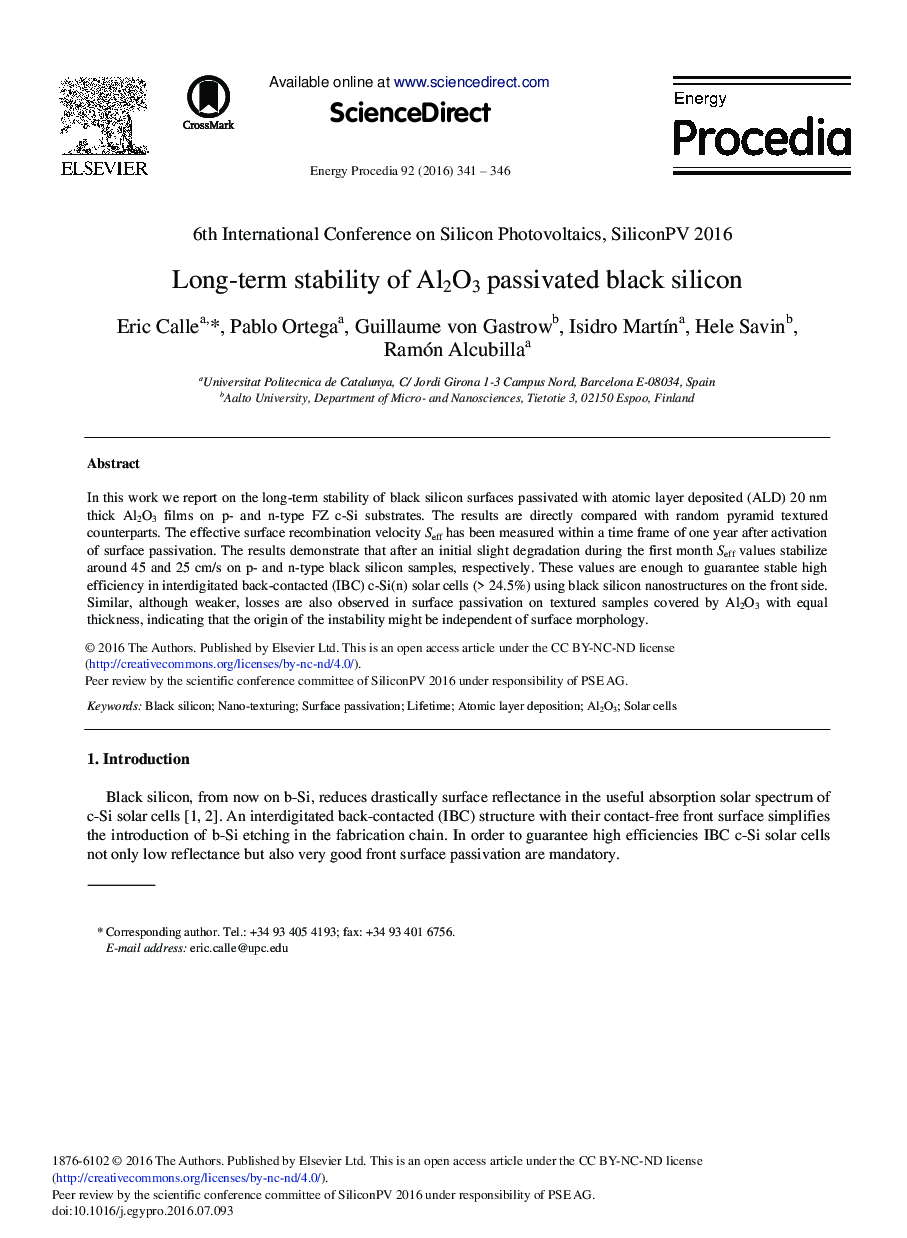| Article ID | Journal | Published Year | Pages | File Type |
|---|---|---|---|---|
| 5446598 | Energy Procedia | 2016 | 6 Pages |
Abstract
In this work we report on the long-term stability of black silicon surfaces passivated with atomic layer deposited (ALD) 20Â nm thick Al2O3 films on p- and n-type FZ c-Si substrates. The results are directly compared with random pyramid textured counterparts. The effective surface recombination velocity Seff has been measured within a time frame of one year after activation of surface passivation. The results demonstrate that after an initial slight degradation during the first month Seff values stabilize around 45 and 25Â cm/s on p- and n-type black silicon samples, respectively. These values are enough to guarantee stable high efficiency in interdigitated back-contacted (IBC) c-Si(n) solar cells (> 24.5%) using black silicon nanostructures on the front side. Similar, although weaker, losses are also observed in surface passivation on textured samples covered by Al2O3 with equal thickness, indicating that the origin of the instability might be independent of surface morphology.
Keywords
Related Topics
Physical Sciences and Engineering
Energy
Energy (General)
Authors
Eric Calle, Pablo Ortega, Guillaume von Gastrow, Isidro MartÃn, Hele Savin, Ramón Alcubilla,
